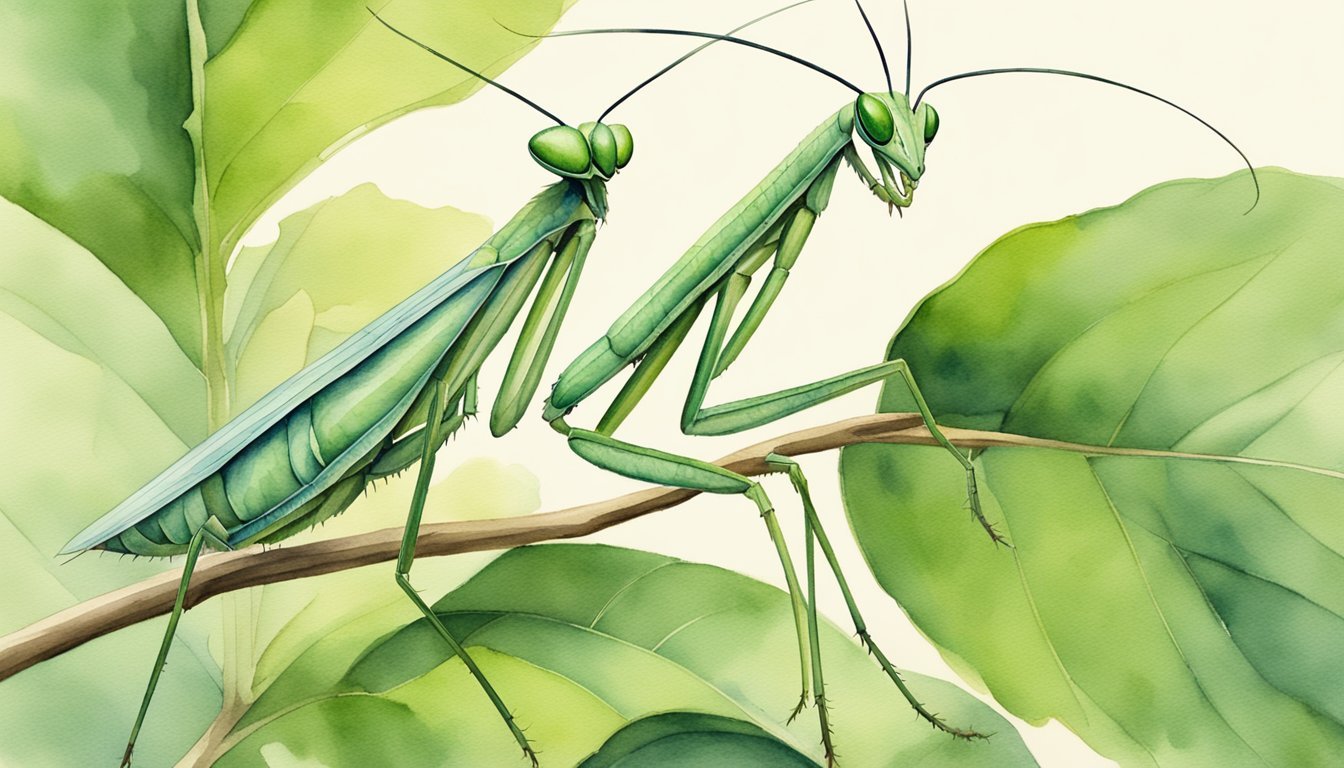Understanding Praying Mantis Bites
Praying mantis bites are a rare occurrence and usually pose little threat to humans. They can happen when a praying mantis is provoked or handled without care.
What Happens When a Praying Mantis Bites?
When a praying mantis bites, it uses its strong mandibles primarily designed for seizing prey. Although rare, if a human is bitten, the typical reaction might involve pain, minor skin irritation, and sometimes a small wound. Praying mantis bites are not venomous and the pain is generally considered mild, similar to a minor bee sting in terms of intensity.
Physical Characteristics of Praying Mantis Bite
In terms of physical characteristics, a praying mantis’ bite may leave tiny puncture marks on the skin due to its small, pointed mandibles. Any bleeding is typically minimal. Most individuals will not experience significant inflammation or an allergic reaction. However, individual reactions can vary, and it’s important to monitor the bite for signs of more severe inflammation or infection.
First Aid and Treatment for Bites
If bitten, the area should be washed with soap and water to reduce the risk of infection. Applying a cold pack can help minimize pain and swelling. Over-the-counter pain relievers may be used if necessary. Although unlikely, if signs of an allergic reaction occur or if the wound does not improve, medical attention should be sought to ensure proper care and treatment.
Praying Mantis Behavior and Interaction

Praying mantises exhibit unique behaviors that make them fascinating subjects of study and observation. These insects are known for their distinctive hunting abilities and their role in the environment, as well as the care considerations when kept as pets.
Defense Mechanisms of Praying Mantises
Praying mantises have several defense mechanisms to protect themselves from predators. When threatened, they may adopt a threatening posture, spreading their forelegs and fanning out their wings to appear larger. At times, their forelegs, equipped with spines, can be used to grasp and pinch perpetrators. Some species are even known to sway back and forth to mimic the motion of leaves in the wind, making them harder to detect.
The Role of Praying Mantises in the Environment
In the ecosystem, praying mantises play the role of both predator and prey. Known for their hunting abilities, they feed on a wide variety of insects, including flies, spiders, and small mammals, which helps control garden pests. Larger species can even prey on hummingbirds. Yet, mantises themselves are preyed upon by birds, bats, and spiders, contributing to the food web dynamics.
Handling and Care for Praying Mantis as Pets
Keeping a praying mantis as a pet requires understanding their behavior and environmental needs. Although praying mantis bites are not dangerous to humans, they can happen if the insect is mishandled or feels provoked. A spacious environment with places to climb and hide, alongside a diet of live insects, is essential for their wellbeing. Observing their complex behaviors is a reward in itself for the careful and considerate pet owner.

